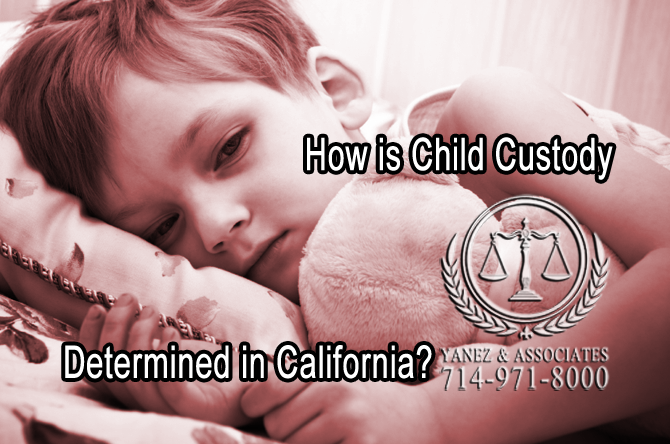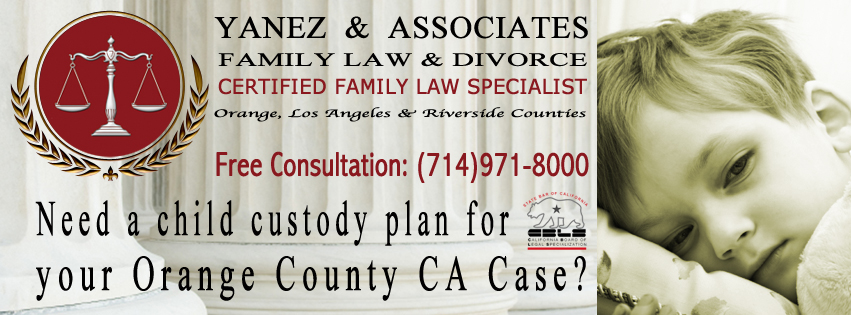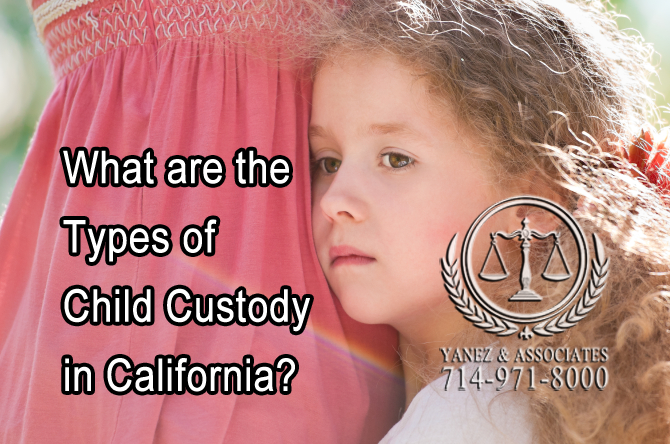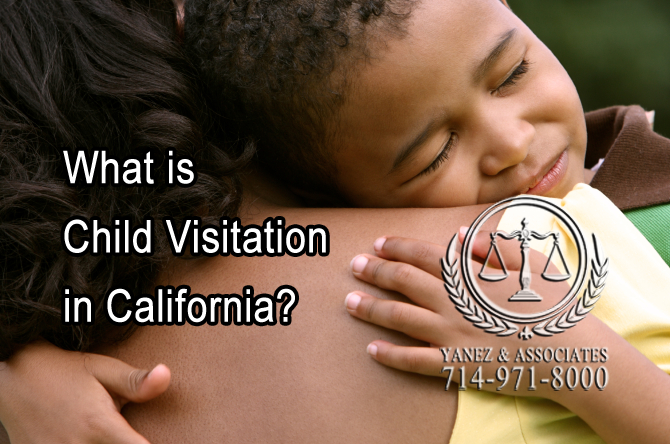OC Child Custody Attorney in California advices
Need a child custody plan for Orange County Case, then know that developing a child custody plan in California can be necessary when the child’s parents are not married to each other or when they are filing for divorce, but both parents want a relationship with the child.
There are two different types of child custody, and there are several ways to successfully create a child custody agreement depending on your unique family situation.
What are the Types of Child Custody in California
Legal Custody & Physical Custody
Child custody can be either legal or physical in California.
Legal custody refers to the power to make decisions for a child regarding health care, education, religion, friends, activities, and more.
Physical custody refers to where the child spends most of his or her time, and which parent will provide the child’s main home.
Joint Custody & Sole Custody
Both legal and physical custody can be awarded either jointly to both parents, or solely to one parent. Just because physical custody is jointly awarded does not mean that legal custody will be jointly awarded, and vice versa. Just because one type of custody is solely awarded does not mean that the other will also be solely awarded.
Joint legal custody means that both parents are legally responsible for making decisions for the child. They do not have to agree on every decision, but this works best in situations where the parents can work together. Sole legal custody means that one parent is responsible for making decisions for the child.
Joint physical custody means that the child will spend time living with both parents, but not necessarily equal amounts of time. Sole physical custody means that the child will live primarily with one parent and will likely have visitation with the other parents.
The parent with whom the child spends most of his or her time is called the custodial parent, and the other parent is called the noncustodial parent.
What is Child Visitation in California?
If one parent is named the custodial parent and is awarded sole custody, the noncustodial parent will usually have visitation rights with the child. There are four main types of visitation orders in California.
Scheduled Visitation
Scheduled visitation is literally a schedule, created by the court, that lists when the child will spend time with the noncustodial parent. It can include holidays, school breaks, vacations, weekends, special occasions like birthdays, mother’s day, father’s day, or important family dates. Usually scheduled visitation is very specific, and it lists the times and dates that the child will spend time with the noncustodial parent. It may also include a scheduled trade off so that the parents have a place to meet, or an arranged way for the child to get from one parent to the other.
Scheduled visitation is usually best for families that want to minimize conflict, or families that have the highest risk of one parent not following through with the terms of the visitation order.
Reasonable Visitation
Reasonable visitation orders are not as strict or as detailed as scheduled visitation orders. These orders are more open ended, and may just list an open ended or generic set of terms that simply state that the noncustodial parent has the right to visitation with the child on a weekly or monthly basis.
Reasonable visitation orders allow the parents to work out the specifics of the visitation between themselves, and tend to be flexible with schedules. If the parents are on good terms with one another and can communicate well together, a reasonable visitation schedule might be appropriate. However, if there are disagreements or misunderstandings, or if either parent does not follow through with a plan, a reasonable visitation order leaves room for issues to arise that can affect both parents and children.
Supervised Visitation
Supervised visitation orders only allow for the noncustodial parent to spend time with the child when another adult is present. Usually, the order specifies who the supervising adult will be: the custodial parent, another adult, or a professional.
Supervised visitation is usually used in cases where the child might be in danger if he or she were to spend time alone with the noncustodial parent, or if there is little or no existing relationship between the child and the noncustodial parent. Supervised visitation may not always be permanent, and it is usually either modified to either no visitation or to scheduled visitation.
Supervised visitation orders are usually specific like a scheduled visitation order, and they may specify who will provide supervision.
No Visitation
In some cases, no visitation may be awarded to the noncustodial parent. This usually happens when the court determines that even with supervision, spending time to with the noncustodial parent would not be in the best interest of the child because it would be physically or mentally harmful to the child.
How is Child Custody Determined in California?

If you ever wondered How Child Custody is Determined in California. Well, In a nutshell, The judges and attorneys will always try to see what is in the best interest of the child. However, you must realize that not everyone will agree on what is in the best interest of the child. Therefore, you need a strong child custody attorney that will make your case before the judge!
Child custody always depends on the best interest of the child. The parents may work together to create their own custody agreement and submit it for approval by the judge, and usually this is one of the best ways to create a custody agreement. Child custody mediation is a viable alternative to litigation to creating your own agreement.
However, if you and your spouse cannot come to an agreement on your own, the court will decide for you. In order to determine the child’s best interest, the court will consider the following criteria:
• How old the child is at the time the order is created,
• The child’s current health condition,
• Relationships between the child and both parents,
• Each parent’s ability to provide and care for the child,
• The child’s ties to his or her community, home or school,
• Any history of violence or abuse in the family,
• In California, at 14, the child’s opinion may be considered in some cases.
If you Need a child custody plan for Orange County case, contact the Child Custody Attorneys in Orange County, California

There is no substitute for quality legal advice. When it comes to your children, you want nothing but the best. At Yanez & Associates, we understand, and we are here to look out for your family and your child’s best interests. Contact our child custody attorneys today to schedule your free initial consultation.














